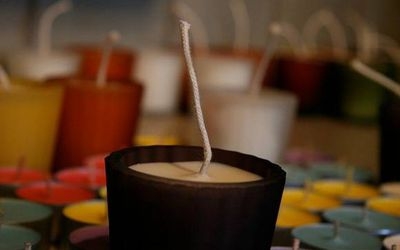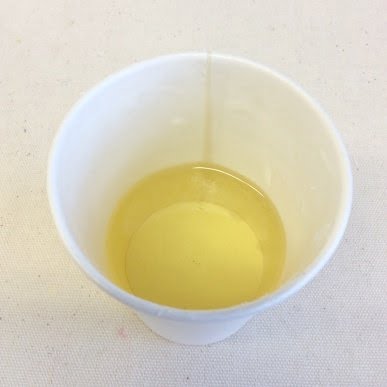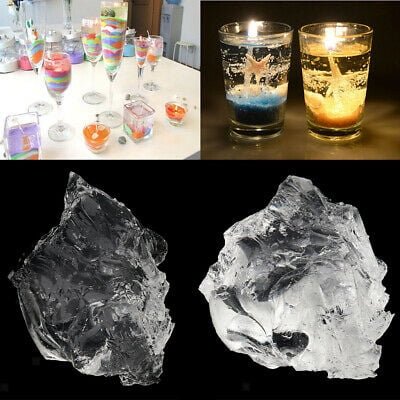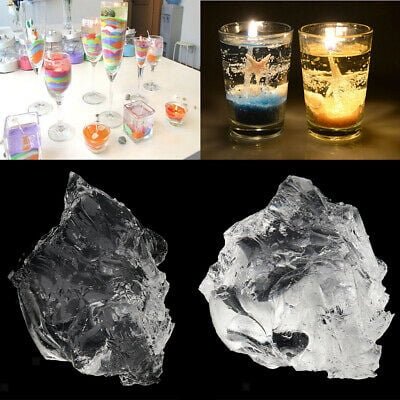Are you looking to delve into the world of candle making and in search of the best wax for container candle making? Look no further.
Choosing the right wax is crucial for creating beautiful, long-lasting, and fragrant container candles. In this blog post, we will explore the different types of waxes available for container candle making, discuss important factors to consider when choosing wax, provide recommendations for best waxes suited for scented and natural container candles, and offer tips for working with different waxes.
Understanding the differences between soy wax, paraffin wax, beeswax, coconut wax, and other options is essential for producing high-quality container candles. Each type of wax has its own unique characteristics that can affect fragrance retention, burn time, color options, and eco-friendliness. By understanding these differences and considering various factors, you can make an informed decision on which wax is best suited for your specific candle making needs.
In addition to exploring the characteristics of different waxes, we will also provide recommendations for the best waxes for holding and releasing fragrances in scented container candles. Furthermore, we will delve into natural and eco-friendly options such as soy wax and beeswax that are ideal for creating environmentally conscious container candles. By the end of this blog post, you will be equipped with all the knowledge needed to choose the best wax for your next container candle making project.
Understanding Different Types of Waxes
When it comes to container candle making, choosing the right wax is crucial for achieving the desired results. There are several types of waxes available, each with its own unique characteristics and benefits. Understanding the differences between these waxes will help you make an informed decision when selecting the best wax for your container candles.
Soy Wax
Soy wax is a popular choice for container candle making due to its eco-friendly nature. It is derived from soybean oil and burns cleanly, producing minimal soot. Soy wax also has excellent fragrance retention, allowing it to hold and release scents effectively in container candles. Additionally, soy wax has a longer burn time compared to other waxes, making it a cost-effective option for candle makers.
Paraffin Wax
Paraffin wax is one of the most commonly used waxes in candle making. It is known for its excellent scent throw, making it ideal for scented container candles. Paraffin wax also offers a smooth and creamy appearance when solidified, creating a visually appealing finished product. However, some individuals may prefer to avoid paraffin wax due to its petroleum-based origin.
Beeswax
Beeswax is a natural and sustainable option for container candle making. It has a unique honey-like aroma and naturally occurring color, adding a touch of warmth to candles without the need for additional dyes or fragrances. Beeswax also has a long burn time and produces a beautiful natural glow when lit.
Coconut Wax
Coconut wax is gaining popularity in the candle making industry due to its clean-burning properties and excellent scent throw. It is made from coconut oil and provides a smooth and creamy appearance when solidified, similar to paraffin wax. Coconut wax also has a long burn time and is considered eco-friendly.
Understanding the unique characteristics of each type of wax will help you determine which option best suits your preferences and needs when creating container candles.
Factors to Consider When Choosing Wax
When it comes to choosing the best wax for container candle making, there are several important factors to consider. From fragrance retention and color options to burn time and eco-friendliness, the type of wax you choose can significantly impact the quality and characteristics of your finished candles.
Fragrance Retention
One of the most crucial factors to consider when selecting wax for container candle making is its ability to hold and release fragrances. For scented candles, it is essential to choose a wax that has excellent fragrance retention properties, ensuring that the scent remains strong and lasts throughout the entire burn time. Soy wax is known for its exceptional ability to hold onto fragrances, making it a popular choice for scented container candles.
Color Options
The color options available with different types of waxes also play a significant role in the overall aesthetic appeal of your container candles. While soy wax and beeswax offer natural off-white or ivory hues, paraffin wax provides more flexibility for creating vibrant and bold colors. Consider the visual impact you want to achieve with your candles when deciding on which wax will best suit your needs.
Burn Time
The burn time of a candle is another critical factor that should be taken into account when choosing the best wax for container candle making. Different waxes have varying burn times, which can affect how long your candles last. For longer-lasting container candles, soy wax is often favored due to its slower burn rate compared to other waxes.
Eco-Friendliness
In an era where sustainability and eco-friendliness are becoming increasingly important, many candle makers are mindful of using waxes that are environmentally friendly. Soy wax and beeswax are popular choices for those who prioritize sustainability as they are derived from renewable resources and are biodegradable. When considering environmental impact, it’s important to research how each type of wax is sourced and produced.
Considering these factors when choosing the best wax for container candle making will help you create high-quality candles that meet your specific requirements in terms of fragrance, color, burn time, and eco-friendliness.
Best Wax for Scented Container Candles
When it comes to creating scented container candles, choosing the right wax is essential for ensuring that the fragrance is effectively held and released. Different types of waxes have varying abilities when it comes to scent throw and retention, so it’s important to consider these factors when selecting the best wax for your scented container candles.
Here are some specific types of waxes that are best suited for holding and releasing fragrances in container candles, along with recommendations for different scent types:
- Soy Wax: Soy wax is known for its excellent scent throw, making it a popular choice for scented container candles. It has a great ability to hold onto fragrances, resulting in a strong and long-lasting scent when the candle is burned.
- Coconut Wax: Coconut wax also has impressive fragrance retention abilities, making it suitable for creating scented container candles. It has a clean burn and can effectively release the fragrance throughout the room.
- Beeswax: Beeswax is another natural wax that is ideal for holding and releasing fragrances in container candles. It has a subtle honey-like aroma that can complement various scents, providing a unique olfactory experience.
When it comes to different scent types, certain waxes may be better suited for specific fragrances. For floral or fresh scents, soy wax can effectively hold and release these delicate aromas. On the other hand,jasmine or vanilla-based scents may be better complimented by beeswax due to its natural honey undertones.
Ultimately, the best wax for scented container candles will depend on the specific fragrance oils being used and the desired intensity of the scent throw. Experimenting with different waxes and fragrance combinations can help you determine which combination works best for your desired results.
Best Wax for Natural Container Candles
When it comes to making natural and eco-friendly container candles, choosing the right wax is crucial. Two popular options for natural waxes are soy wax and beeswax, each with its own unique benefits and characteristics.
Soy wax is often considered one of the best waxes for container candle making due to its eco-friendly nature. It is derived from soybean oil, making it a renewable and sustainable option. Soy wax also has excellent fragrance retention, allowing for a strong scent throw in container candles. Additionally, it has a smooth and creamy appearance when solidified, creating a visually appealing finished product.
On the other hand, beeswax is another natural option that offers its own set of advantages. Beeswax is known for its natural aroma and golden color, adding a unique touch to container candles without the need for additional dyes or fragrances. It also has a longer burn time compared to other waxes, making it an economical choice in the long run. Additionally, beeswax emits negative ions when burned, which can help purify the air in your living space.
In summary, both soy wax and beeswax are excellent choices for creating natural and eco-friendly container candles. Their unique qualities make them stand out as top contenders for those looking to create high-quality candles with minimal impact on the environment.
| Wax Type | Key Benefits |
|---|---|
| Soy Wax | Eco-friendly, excellent fragrance retention, smooth and creamy appearance |
| Beeswax | Natural aroma and color, longer burn time, air-purifying properties |
Pros and Cons of Different Waxes
When it comes to choosing the best wax for container candle making, it’s important to understand the pros and cons of different types of waxes available. Each type of wax has its unique characteristics and knowing them can help you make an informed decision. Below, we break down the advantages and disadvantages of popular waxes for container candle making:
- Soy Wax: Soy wax is a popular choice for container candles due to its natural origins and excellent scent throw. It also burns cleaner than paraffin wax, making it a more eco-friendly option. However, soy wax can be trickier to work with in terms of achieving a smooth finish on the candle’s surface.
- Paraffin Wax: Paraffin wax is known for its affordability and ability to hold fragrance well. It also has a smooth and glossy finish when used in container candles. On the downside, paraffin wax is not as environmentally friendly as other options, as it is derived from petroleum.
- Beeswax: Beeswax is a natural and sustainable option for container candles. It has a naturally sweet aroma and burns longer than other waxes. However, beeswax can be more expensive than other waxes and may have limited color options.
In addition to these popular waxes, there are also options such as coconut wax and palm wax that each come with their own set of advantages and disadvantages for container candle making.
When considering which wax to use for your container candles, it’s important to weigh these pros and cons against your specific needs and preferences. Whether you prioritize eco-friendliness, scent throw, burn time, or budget, understanding the characteristics of different waxes can help you make the best decision for your candle-making projects. Remember that experimentation may be necessary to find the perfect fit for your individual candle-making needs.
Tips for Working With Different Waxes
When it comes to creating the perfect container candle, choosing the best wax for your project is crucial. The type of wax you use can have a significant impact on the overall quality and performance of your candles. However, working with different types of waxes can also present unique challenges. Here are some helpful tips and tricks for working with different types of waxes, from melting and pouring to troubleshooting common issues.
One of the most important factors to consider when working with wax is the melting point. Different waxes have different melting points, so it’s essential to follow the manufacturer’s guidelines for melting and heating temperatures.
For example, soy wax has a lower melting point than paraffin wax, so it requires less heat to melt effectively. Overheating can affect the fragrance throw and color of your candles, so it’s important to invest in a good quality thermometer and closely monitor the temperature throughout the process.
When pouring melted wax into containers, it’s essential to do so at the right temperature. Pouring at too high or too low a temperature can result in uneven surfaces, sinkholes, or adhesion issues. Again, following the manufacturer’s instructions for pouring temperatures is key to achieving professional-looking container candles.
Inevitably, even with careful planning and execution, you may encounter some issues when working with different types of waxes. Common problems such as frosting, tunneling, or poor scent throw can occur. Understanding how to troubleshoot these issues is essential for any candle maker. For example, frosting often occurs with soy wax candles but can be minimized by using a heat gun or hairdryer to smooth out the surface once the candle has been removed from the mold.
As you work with different waxes for container candle making, don’t be afraid to experiment and find what works best for you based on these tips and tricks.
| Tip/Trick | Description |
|---|---|
| Melting Point | Pay attention to melting points as each wax type varies. |
| Pouring Temperature | Adhere to recommended pouring temperatures for optimal results. |
| Troubleshooting Issues | Learn how to troubleshoot common problems like frosting or poor scent throw. |
Conclusion
In conclusion, choosing the best wax for container candle making is a crucial step in ensuring the quality and performance of your finished product. By understanding the different types of waxes available, including soy wax, paraffin wax, beeswax, and coconut wax, you can make an informed decision based on factors such as fragrance retention, burn time, and eco-friendliness.
When it comes to creating scented container candles, selecting the right wax is essential for optimal fragrance throw, making soy wax and beeswax popular choices for their superior scent-holding properties.
For those seeking natural and eco-friendly options, soy wax and beeswax are also excellent choices due to their renewable sources and minimal impact on the environment. However, it’s important to weigh the pros and cons of each type of wax before making a decision.
While soy wax may offer clean burning and easy cleanup, it may not hold fragrances as well as paraffin wax. On the other hand, beeswax may have a natural honey-like aroma but tends to be more expensive.
Frequently Asked Questions
Which Wax Is Good for Jar Candles?
Choosing the right wax for jar candles can depend on various factors such as fragrance retention, burn time, and appearance. Soy wax is a popular choice because it has good scent throw, burns cleanly, and has a smooth appearance when poured into jars.
Which Candle Wax Holds the Most Fragrance?
When it comes to holding fragrance, soy wax is often considered the best option for candle making. Its porous nature allows it to hold onto fragrance oils well and release them gradually when the candle is burned. This results in a strong and long-lasting scent throw.
What Wax Do Professional Candle Makers Use?
Professional candle makers often use soy wax, paraffin wax, beeswax, or a blend of these waxes depending on their specific needs. Soy wax is known for its eco-friendly properties and excellent scent throw, while paraffin wax is valued for its ability to hold color well and provide a smooth finish.
Beeswax is favored for its natural origins and subtle honey-like scent.

Welcome to my candle making blog! In this blog, I will be sharing my tips and tricks for making candles. I will also be sharing some of my favorite recipes.





